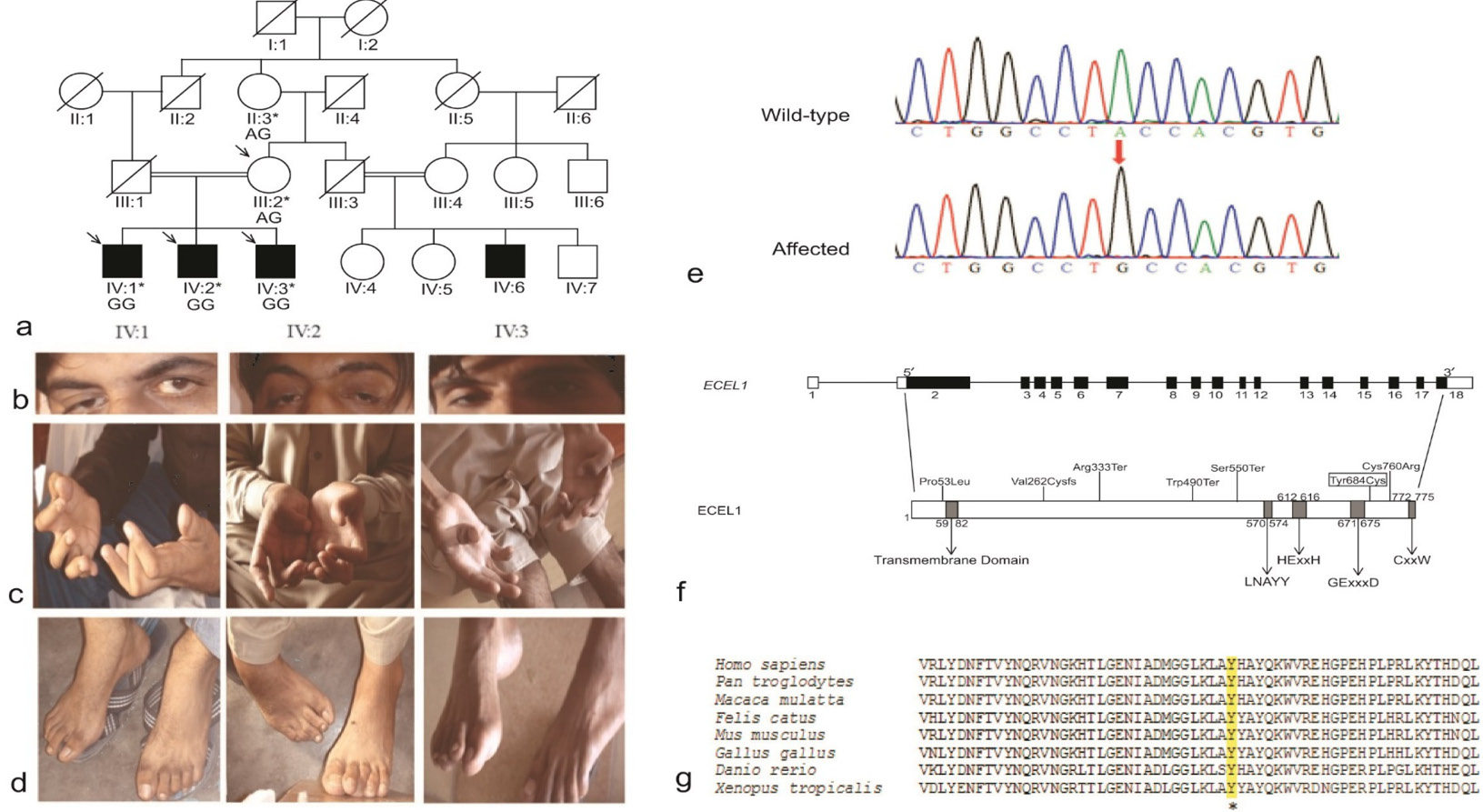Fig. 1.
Pedigree of family RDHR-01 and genotypes for the ECEL1 variant segregating with the phenotype.
(a) RDHR-01 pedigree. *Individuals who participated in this study. Arrows denote individuals for whom whole-exome sequencing was performed. The genotypes for ECEL1 (c. 2051A>G) p.(Tyr684Cys) variant are indicated below the individual symbols of all participants. Clinical images of affected individuals IV:1, IV:2 and IV:3. (b) Unilateral ptosis severe on right side in individual IV:1 and mild bilateral ptosis in others. (c) curved fingers and adducted thumb of hands. (d) mild camptodactyly of toes in individual IV:1, clubfoot deformity in individual IV:2 and high arched of feet in individual IV:3. (e) Electropherogram of ECEL1 sequence analyses. The site of mutation is depicted by an arrow. (f) Schematic representation of ECEL1 (NM_004826.2), black boxes represent translated exons and plain boxes denote 5ʹ and 3ʹ untranslated regions. Introns are depicted by horizontal lines. The variant p. Tyr684Cys identified in family RDHR-01 is boxed. LNAYY motif is involved in orientation of substrate peptide bond. HExxH is a zinc biding motif. GExxxD is a Zinc coordinating motif. CxxW is the conserved carboxy terminal sequence of metalloprotease. (g) Conservation of ECEL1 residue p. Tyr684 from eight species of vertebrates. The residue p. Tyr684 is highlighted and marked with an asterisk. (Coloured figure may be observed in the online issue of the journal).
